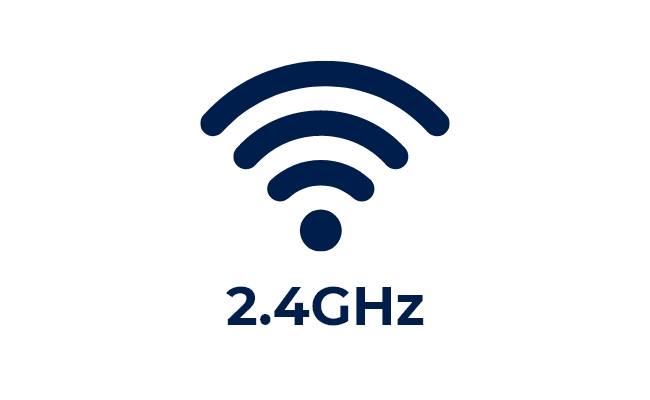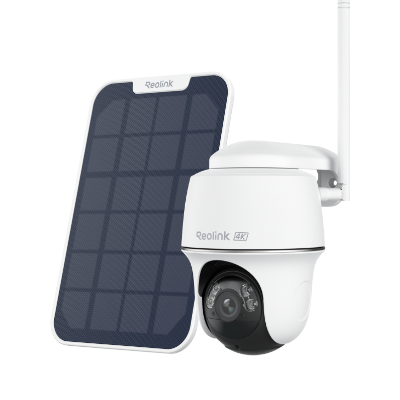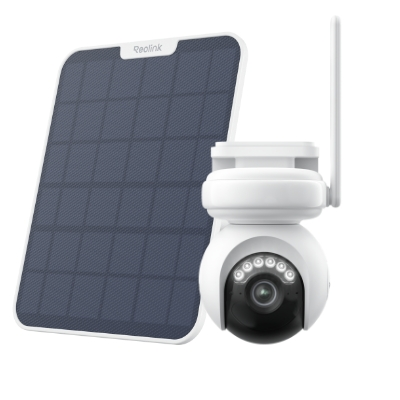How to Change WiFi to 2.4GHz?

To get the best wireless performance, it’s important to choose the right WiFi band. The two most common options are 2.4 GHz Wi-Fi and 5 GHz Wi-Fi. By changing the Wi-Fi to 2.4ghz 2.4 GHz, you'll enjoy a more stable and faster connection across your home or office. This guide will take you through step-by-step instructions on how to change WiFi to 2.4GHz. Just keep reading!
How to Change WiFi to 2.4GHz in Your Router?
To switch your WiFi to 2.4 GHz on your router you must first ensure that it supports this frequency band, if it does, you may follow the steps below:
1. Ensure that your router is compatible
Start by checking your router's model number or specifications to ensure that it supports 2.4 GHz. If your router supports, you may follow the steps below.
2. Login to the admin panel of your router
Connect to the router wirelessly or via Ethernet connection. Open a browser and type 192.168.0.1 or 192.168.1.1 in the address bar. Log in to your router using the Admind panel credentials.
Look for WiFi or Wireless in the settings. There, you can change the frequency of your wireless network.
3. Set frequency band as 2.4 GHz
Under the wireless settings tab you will look for frequency or band selection option. Click it and choose 2.4 GHz.
4. Rename SSID for easier identification
You may keep using the same name, but renaming the WiFi SSID will help you identify the router more easily. You can rename it in Wireless or General settings.
5. Save changes and restart router
Finally click save and restart your router. Now it will start with 2.4 GHz wireless connectivity.
Remember that these steps may vary between products and models, so it is best advised to follow the instruction manual for your specific model.
How to Change WiFi to 2.4GHz on Windows/Mac?
With modern operating systems, you can easily switch your WiFi network frequency on your computer. Below we have shared detailed guides on how to switch to 2.4GHz WiFi on your Windows and MacOS computers.
How to change WiFi from 5GHz to 2.4GHz WiFi on Windows?
- Press Win + X and click Device Manager.
- Right-click the network adapter and open its properties.
- Go to Advanced, Property, Preferred Band, and select 2.4 GHz.
- Click OK to save and reconnect with your WiFi network.
How to change WiFi from 5GHz to 2.4GHz on a Mac?
- Open the Airport Utility app on Mac and go to Graphical Overview
- Select a base station and click edit
- Click wireless then wireless options
- A dialogue will appear where you can select the WiFi Channel 2.4 GHz
- Click save then update to save these changes
Basic of 2.4GHz Wi-Fi and 5GHz WiFi
The WiFi technology works on frequency bands and the two most common ones are 2.4 and 5 GHz. Below are the details of these two WiFi bands:
What is 2.4GHz WiFi?
2.4 GHz is the WiFi frequency band that operates between 2401 to 2484 MHz range. It is a common standard for wireless communication that is known for its long range and better penetration through solid objects like walls.
Pros:
- It covers large range in bigger homes
- It offers stable connection despite of obstacles
- You get better device compatibility
Cons:
- Prone to interferences
- Less data transfer rate
What is 5GHz WiFi?
5GHz is the WiFi frequency band that operates between 5.15 and 5.85 GHz. It is popular for providing faster internet connection speeds and is better against interference, making it amazing for bandwidth-intensive tasks.
Pros:
- High data rate
- Less interferences
- Larger number of channels available
Cons:
- Shorter range
- Not supported by older devices
2.4GHz Wi-Fi vs 5GHz Wi-Fi: Practical Applications
Let's get a quick overview of the practical applications of 2.4 GHz and 5 GHz WiFi.
2.4 GHz Wi-Fi Practical Applications
- Beneficial for the multiple rooms and the big houses to ensure the internet connection everywhere.
- Suitable for integration with numerous other smart home devices including surveillance cams, bulbs, and climate control systems.
- Beneficial in places with dense walls or other barriers, allowing for a uniform signal in the given complex environment.
5 GHz Wi-Fi Practical Applications
- Most suitable for usage in applications that demand large amounts of bandwidth, such as video streaming, game playing, and VoIP services.
- It provides better connectivity in areas with many routers and other WLAN devices interfering with each other.
- Most suited to newer devices offering high data rates and new WiFi standards, increasing the general performance.
Bonus: Dual-band WiFi Security Camera Recommendation
If you are looking for enhanced security with dual-band WiFi capabilities, here are two top recommendations:
Reolink Argus 4 Pro
Argus 4 Pro features include video in high definition, night vision, and the best motion detection. Besides, it supports dual-band WiFi for secure connections and thus is ideal for surveillance during the day as well as at night. This camera provides 4K 180-degree coverage.
4k 180° Wire-free Color Night Vision Camera
4K UHD 180° Blindspot-free View; Color Vision Day and Night; 30% More Battery Life; Dual-band Wi-Fi 6; Smart detection.
Reolink Argus PT Ultra
The Argus PT has mounting/configuration options for both pan and tilt, therefore it provides versatile configuration for the desired degrees of coverage. With features such as dual-band WiFi connectivity and waterproof features, the system is suitable for home and business security both indoors and outdoors. It provides 4K 8MP clear coverage and enhanced auto-tracking capability.
4k 100% Wire-Free PT Camera
4K 8MP Ultra HD; 5GHz/2.4GHz WiFi; Rechargeable Battery & Solar Powered; 355° Pan & 140° Tilt; IP65 Certified Weatherproof; Clear Night Vision; 2-Way Audio; 122° Wide Viewing Angle.
Reolink Altas PT Ultra
For those seeking the ultimate in security technology, consider the Reolink Altas PT Ultra. This advanced camera combines industry-leading 4K continuous recording with dual-band WiFi 6 capability, ensuring a stable and high-quality connection. With its pan-and-tilt functionality and exceptional battery life, it’s designed to meet all your comprehensive surveillance needs.
Industry-leading 4K Continuous Recording Battery Camera
4K UHD Continuous Recording; ColorX Night Vision; Pan & Tilt; Automatic Tracking; All Recordings Stored Locally.
FAQs
1. How do I connect to only 2.4 GHz Wi-Fi instead of 5 GHz Wi-Fi?
Connect to the router through the IP address, go to the Wireless settings, and untick the 5Ghz option. Otherwise, set up a different network name for the 2.4GHz band and then configure your device to the said band as well.
2. Why should I change my WiFi to 2.4GHz?
Switching to 2.4GHz, they get better distance and have fewer issues with passing through the walls, which is preferable for big houses or spacious rooms with many barriers. This is also preferable for many smart home devices that can work only with 2.4GHz.
3. How do I enable 2.4 GHz on my WiFi?
On your phone or computer, open the Wi-Fi settings, switch Wi-Fi on, and connect to the 2.4 GHz WiFi network from the available options.
4. How do I split my router into 2.4 and 5GHz?
Check the back of your router for the IP address or search your router model online to find it. Log in, then go to the settings and look for options like “wireless band” or “enable split banding”, usually found under advanced settings.
Conclusion
The 2.4 GHz WiFi network standard has been around for a long time, and the reason behind that is its reliable connection over a long distance. While the other standards may be faster, they do not provide such better distance coverage, and that might be the reason why you want to switch to 2.4 GHz WiFi.
With the guides covered here, we hope that now you can easily know how to change WiFi to 2.4GHz network standard if your device supports it.
Search
Subscribe for the Latest Updates
Security insights & offers right into your inbox



